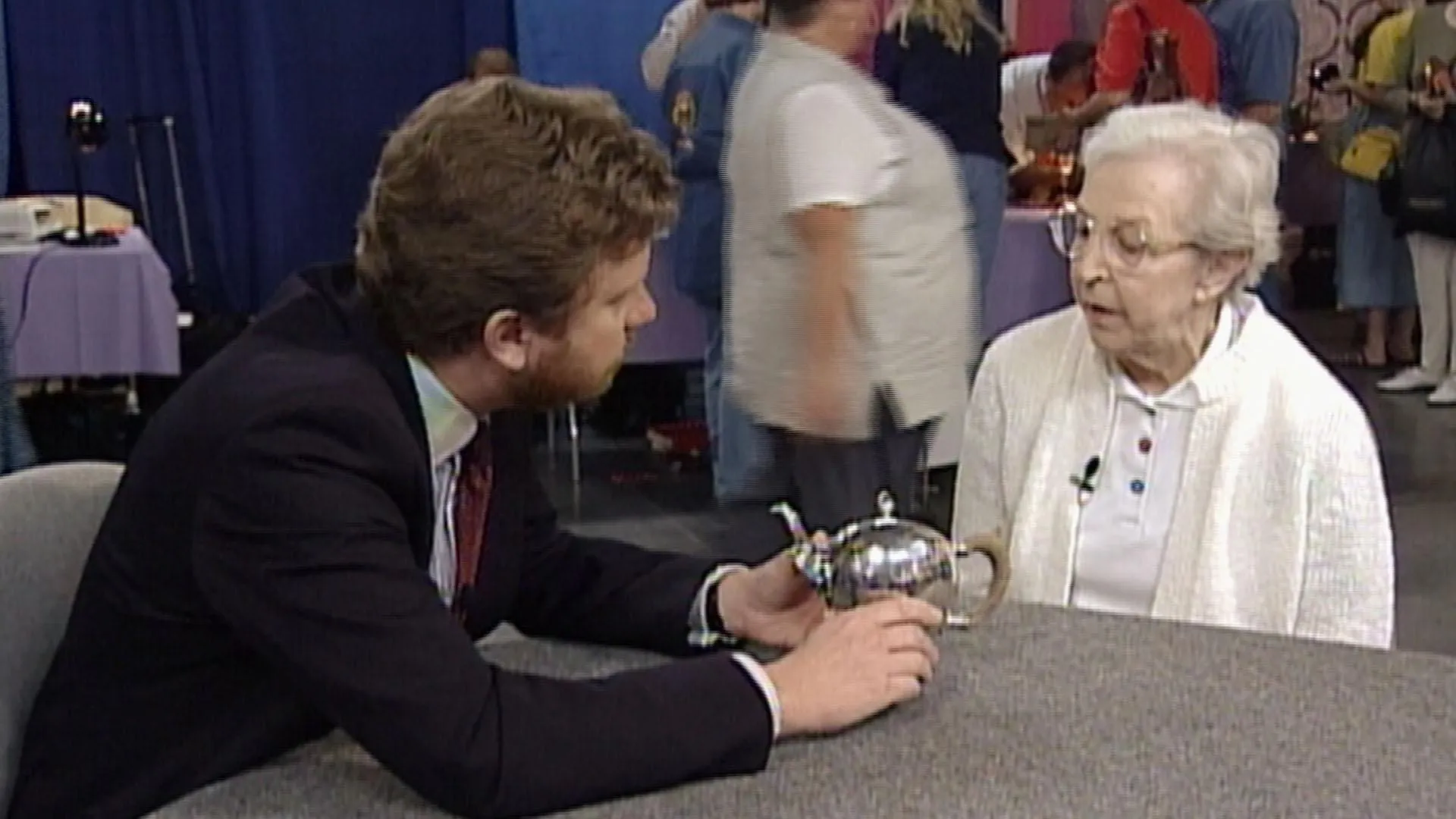GUEST: It belonged to my great-grandfather.
APPRAISER: Your great-grandfather?
GUEST: Yes.
APPRAISER: And where was he from?
GUEST: He was from Maine.
APPRAISER: From Maine, wonderful. I suspect that this is an item that migrated west with him, because it's a classic example of Philadelphia banjo-making. There are, on the East Coast in the 19th century, three or four, we might say, schools of banjo-making, the first one being in Boston, then the next, Groton, Connecticut. There was a New York school of making, and then lastly, the Philadelphia school. This one, made in Philadelphia, I'd guess around 1880. It's a classic example of the work of S.S. Stewart, who was working there at that time. Unfortunately, it's not signed, but there's no question about it, it's an S.S. Stewart. And his banjos are very coveted today. One of the hallmarks of this Philadelphia school is the way the peg-head with this very sharp finial is undercut. Can you see how it's slanted back?
GUEST: Yeah.
APPRAISER: And this wonderful pearl work, which S.S. Stewart was well-known for. It survives in magnificent condition. Retail value on a piece like this, I'd probably say $1,800 to $2,200. It might be a little bit on the strong side, but it's all here, it's in great shape, and it's a great piece of family history.
GUEST: Thank You.











